KEF LS50 WIRELESS II: Sometimes a new product is very similar to its predecessor. That first impression can be very misleading, we discovered (again) with the KEF LS50 Wireless II. This recently released version of the successful wireless stereo speakers has been improved in so many areas that you can hardly compare old with new. The metamaterial and the addition of an HDMI-ARC port in particular make for real progress.
With the first LS50 Wireless, KEF created a new product category almost on its own initiative: active stereo speakers with integrated streaming and at hi-fi level. And intended for the discerning music lover who is nevertheless averse to a large pile of hi-fi gear and cables lying around like unwanted anacondas. It may not have been the first devices of this type, but the KEFs were without a doubt real trendsetters. Whoever goes first risks a lot of course. You do the heavy lifting required to try something new, and if something is still missing, a competitor can pick up on it.
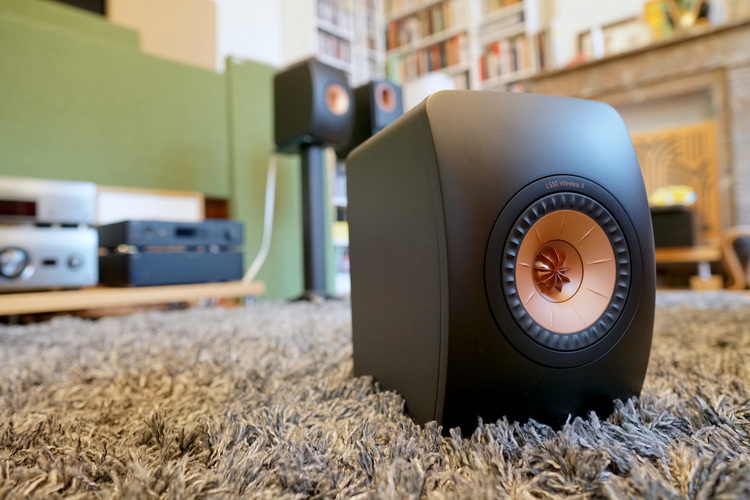
What do you do as a brand? You provide a successor who tries to address any criticism. That is the LS50 Wireless II, a clear answer to the latest trends and feedback from the market. With a solid injection of groundbreaking audio technology to improve the reproduction.
A lot has been adjusted with the LS50 Wireless II, both in terms of software and hardware. You can connect the speakers to your television via HDMI and there are many more streaming options. You can now play music wirelessly via Bluetooth, Chromecast or AirPlay 2. Or you can use the new app that supports more streaming services than before and internet radio. In terms of reproduction, much more power has been provided and a metamaterial – explanation will follow – has been applied in the renewed Uni-Q driver. Some of those changes mirror the improvements in the passive version of the LS50 Wireless, the LS50 Meta. You will soon read a separate review about that speaker from colleague Max.
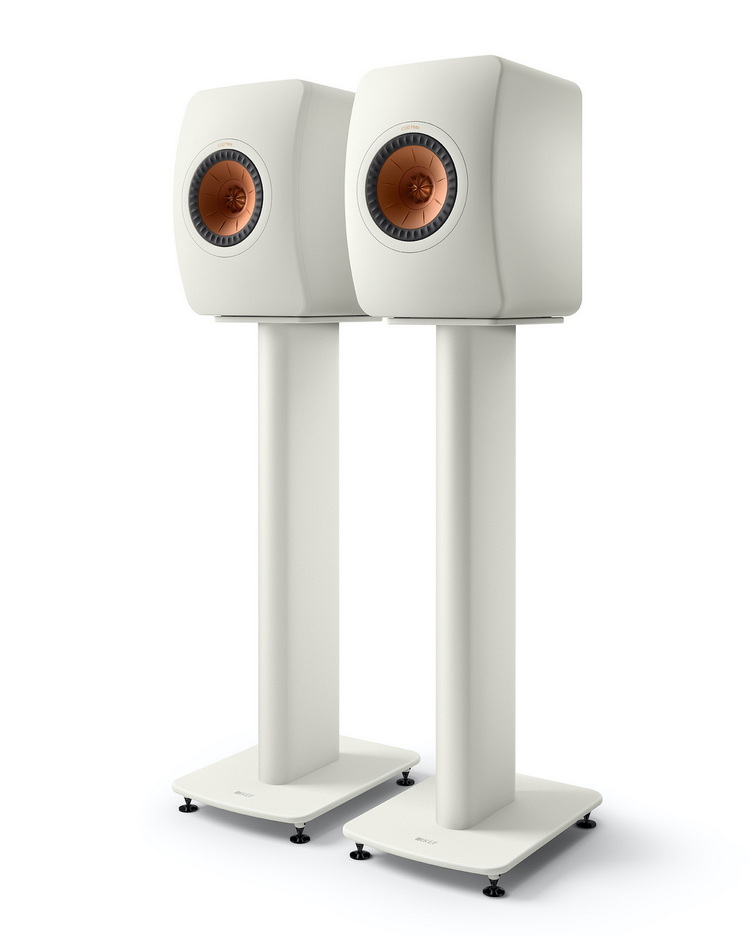
All of this makes the $ 2,499 KEF LS50 Wireless II even more of a do-everything solution, designed for those who don’t want a comprehensive music system, but demand something better than what wireless speakers of the Sonos genre can offer. It is therefore only logical that you are talking here about two separate speakers that are used in a stereo setup. Music should be listened to in real stereo. If you’re used to Bluetooth speakers, going from one to two speakers is the first, most effective upgrade you can ever make. There is no longer a need to run a cable between the pair, another version II innovation borrowed from the tiny LSX . Plug in and you can listen to music.
Modern and traditional at the same time
The original LS50 Wireless was an active version of the passive LS50 speaker that requires a separate amplifier and source devices. It was smart of KEF to do that, because in this way they continued to build on an audio design that was almost universally acclaimed. So the British brand took an established value that sounded good and added a built-in amplifier that was completely optimized for the LS50. And don’t forget: streaming.
The LS50 Wireless II is a further evolution of that unlikely combination of tradition and trendsetting. So do not expect a pair of speakers that suddenly look completely different than before, although we must immediately add that the industrial design of the LS50 has always been more modern and wavy than with traditional hi-fi speakers. The old and new LS50 speakers look largely the same, although there are certainly things different. For example, what struck us immediately when we placed the Wireless II next to the first Wireless speakers was the matte finish. The previous edition had a high-gloss finish. The shape, the rounded corners and the striking convex front with a copper-colored driver in the middle are still there. No problem, in our opinion, because the LS50 design that was introduced in 2011 remains fresh and modern. Due to the matte finish on the Carbon Black version that we received a visit, we did find that the new KEFs look just a bit more luxurious. It also shows less dust and fingerprints.
Crimson Red
The LS50 Wireless II is available in four colors: matte black, white, gray and a special edition in Crimson Red. To make it even better, the driver has each time received a suitable color. For the black and white versions, KEF opted for a matte copper color, for the titanium gray LS50 Wireless II for red – and for the red edition for a gray driver. So some of those editions are a bit more ‘outspoken’ than the others, but that’s fine. It’s also typically KEF, as exclusive finishes have already appeared from the LS50s and the smaller LSX. The green and gold driver version of the LSX, for example, is still one of the most beautiful speakers we have ever seen. The new Meta in royal blue is also a winner. It is a pity that it is not available in a Wireless version.
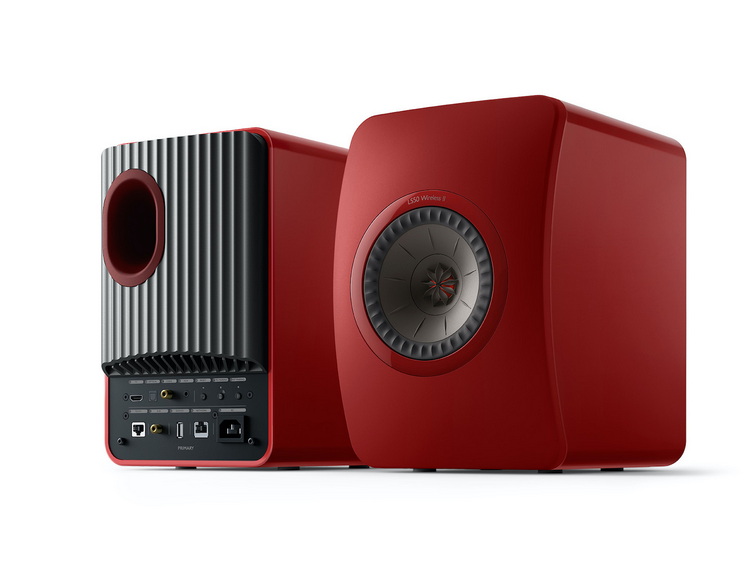
These speakers are easy to place because of their wide appearance. They may even be a little closer to the ground, although a placement at ear height is best. The LS50 Wireless II also fits perfectly on the new KEF S2 stands, available in matching colors. Close to a wall? In itself yes, because you can make many adjustments in the app to compensate for the placement. Due to the Uni-Q driver, they are also very suitable for near-field listening, i.e. at close range. They are relatively deep because, in addition to the acoustic spaces, the housing also contains a solid chunk of electronics. So you may need to have a desk at aircraft carrier level before they fit on it properly, but it can be sound technically.
The speaker is the hub
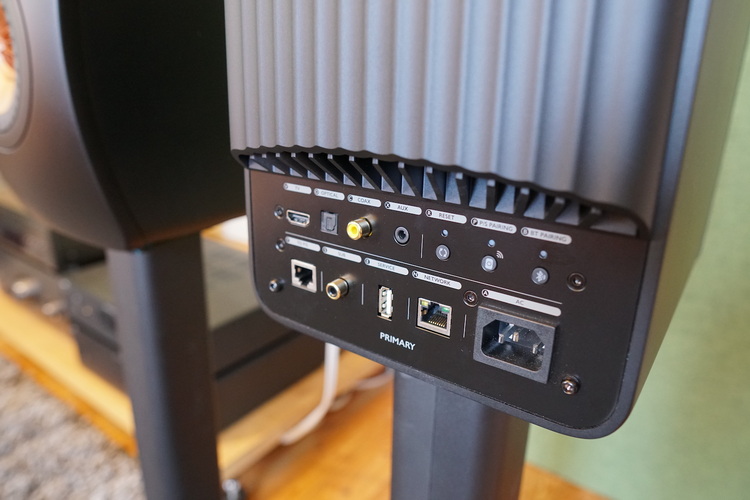
Where some brands prefer to control their active speakers from a separate hub, KEF opts to group all connections on the back of one of the two LS50 Wireless IIs. Although this unit is called ‘Primary’, this does not mean that only one of the two speakers contains electronics. Both KEF speakers have their own amplification on board and come with their own power cord. An important difference with other active stereo solutions where one of the two speakers is a passive one, as is the case with the Klipsch The Fives .
Is placing all connections on the speaker itself or on a separate hub good or bad? Both options have advantages and disadvantages. After all, a hub is an extra device that you have to give a place, with the KEF approach you sometimes have to do a little more on cable management. It depends on how many devices you want to connect. If you want to connect the LS50 Wireless II to your TV via HDMI, you will certainly have to provide a sufficiently long HDMI cable.
If you look at the connections on the back of the Primary speaker, you will notice that there are two network connections. You can use one of these to connect to the network, although you can also work via WiFi. Setting up WiFi is very easy via the Google Home app, via the WiFi settings of an iPad or iPhone, or via the new KEF Connect app. Three ways, the iOS approach being the simplest. But it is never difficult. The second port is provided to make a wired connection to the second LS50 Wireless II. But this is also something optional, because new with version 2 is that the two speakers can connect equally well with each other wirelessly. That makes it more convenient to neatly place the KEF speakers in your living room.
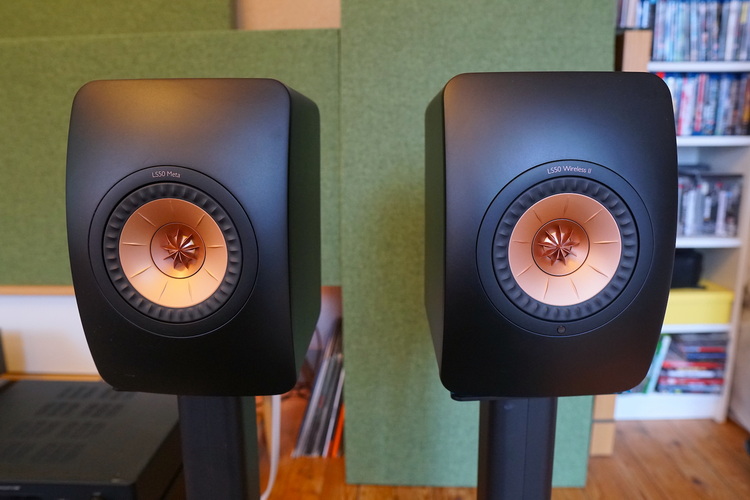
Why would you actually work with a cable between the two speakers? Actually, it is only a must if you want to listen to files over 96 kHz / 24-bit (with an upper limit is 192 kHz) and do not want them to be downsampled. KEF says a cable connection can also be useful if the sound goes down due to interference. We mainly worked wirelessly during testing and never noticed dropouts, despite the presence of dozens of WiFi networks. You have that in a busy urban living environment.
Better with the TV
You connect a television to the HDMI port. That KEF added that was a wise move. Previously, you could connect the LS50W to a TV set via an optical cable, but then you could not control the volume with the TV remote control. That is possible with an HDMI-ARC connection, which is much more pleasant in terms of ease of use. By the way, via the KEF app you can set the speakers to automatically switch to the HDMI input when you start watching TV. Useful.
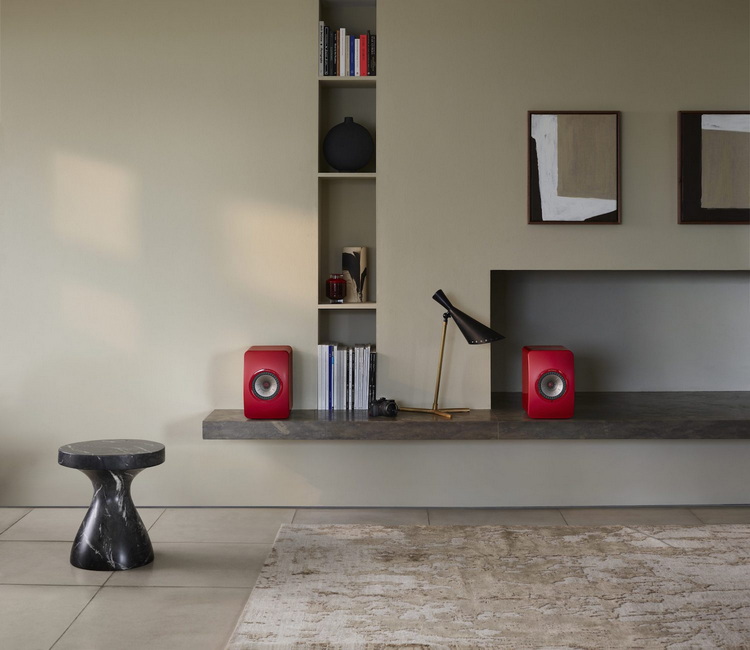
There are also other options if you want to connect additional sources. With the optical and coax inputs, you can connect devices digitally, such as a CD player or a console. In order to connect our Pro-ject The Classic in the living room, a small phono preamplifier had to be added, so that we could hang the turntable on the aux input. Finally, you will also find a series of small buttons at the back. These serve, among other things, to place the speakers in pairing mode when you want to stream over Bluetooth.
A plus with the app: the speakers remain accessible from your phone in standby. You do not need the remote control to switch it on.
This one can do it all
Speaking of streaming: this is an area where KEF has made great strides with the Wireless II. The brand previously admitted that it sometimes struggled with software development in the past – a typical problem in the hi-fi world – but now it wants to make up for that with a completely new platform and app. As a result, the LS50 Wireless II now features virtually any streaming technology. Not that you will use all options immediately, but that has just reduced the danger of lock-in. If you switch from Android to an iPhone in about a year, you can switch from Chromecast to AirPlay 2 without any problems.
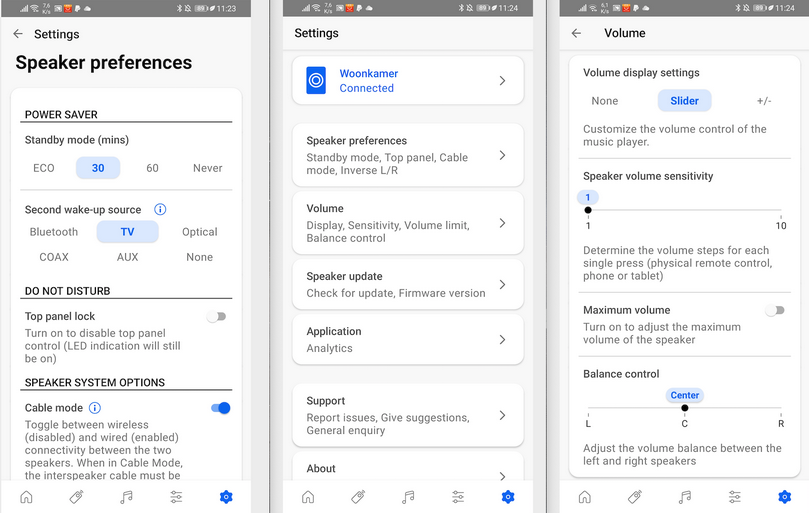
In addition to those two streaming technologies, the LS50 Wireless II also comes with Bluetooth (aptX) and DLNA. Spotify Connect is also there, so you can just see the KEF speakers pop up in the Spotify app and tap. And Roon? In Roon, the speakers still appear as ‘not certified’, so that you cannot use them as a Roon endpoint due to the recent policy change by Roon. But the certification is on the way. In the past, KEF was always quick to get this sorted out, so we have confidence in that.
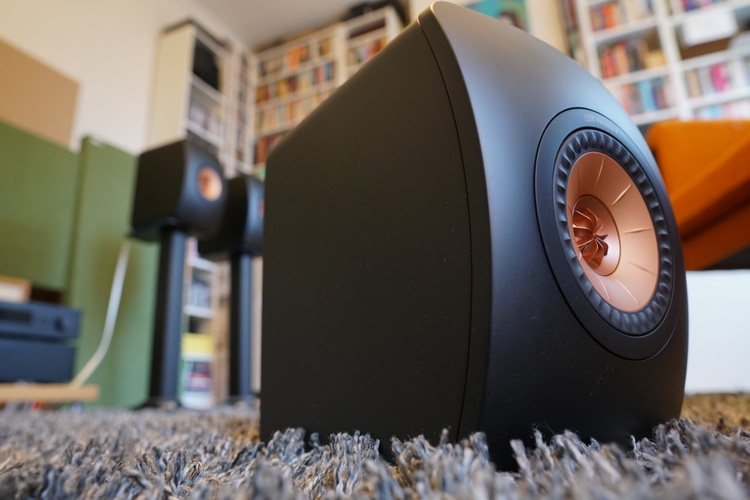
Thanks to AirPlay and Chromecast, you can also switch on the LS50 Wireless II in a multiroom environment. Simultaneously playing an Apple Music playlist on a Harman Kardon Citation speaker in the kitchen and on the KEFs in the room is very easy. If the Roon approval has passed, then multiroom can also be done this way.
New app
With the new LS50s you use a new app, called KEF Connect (iOS and Android). Where the previous KEF Control and KEF Stream apps looked rather sober, this has become a very rich app that also tries to stimulate you with podcasts and articles from KEF itself. A nice idea that turns a regular remote app into something more interesting. For example, we heard an interview with a metallurgical expert who spoke about the use of metal for music reproduction. Wondering what content KEF will add.
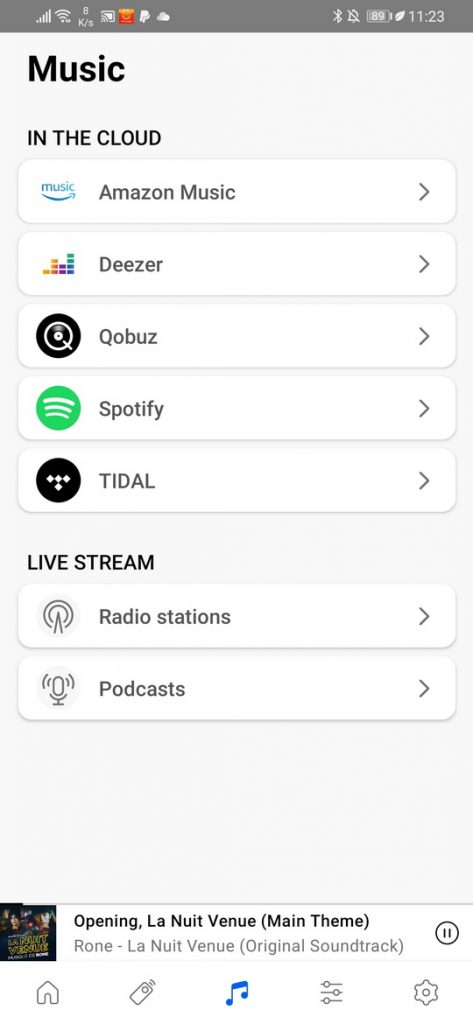
Perhaps more importantly, you can play music directly in the app via Amazon Music, Deezer, Qobuz and Tidal. Since these also all support Chromecast and AirPlay, you can of course also continue to use the apps of the services themselves. You just get a choice. We found the presentation of Qobuz in the KEF Connect app quite nice in a sober way, in the Qobuz app itself you have a little more information and you get recommendations based on the album you have selected.
The KEF Connect app also gives you direct access to internet radio stations and podcast. For example, podcasts are organized thematically to help you, but of course you can also search for a favorite station or podcast.
Something that we do not find in the app is the possibility to play your own files. That is of course very easy with a DLNA player such as BubbleUPnP or mConnect, so it is not a big problem. In any case, we will check with KEF whether this function will still appear in the Connect app.
Worth playing with
Just as important is that the Connect app works as an advanced remote. In addition to selecting inputs, KEF Connect also offers a whole series of settings that are very useful for optimally adjusting the sound reproduction. It is certainly worth playing around with this. For example, there are EQ Settings that adjust the sound to the placement, for example if you place the speakers close to a wall. The bass extension option is also very practical to compensate for a room that sounds a bit woolly. Here you will also find all controls to set an optional subwoofer. To be honest, we would only add an extra wired sub to the LS50 Wireless II in very large rooms, because it already produces a very nice bass out of the box. Elsewhere in the app you will find another handy choice: is the primary speaker on the left or right?
Small remote control
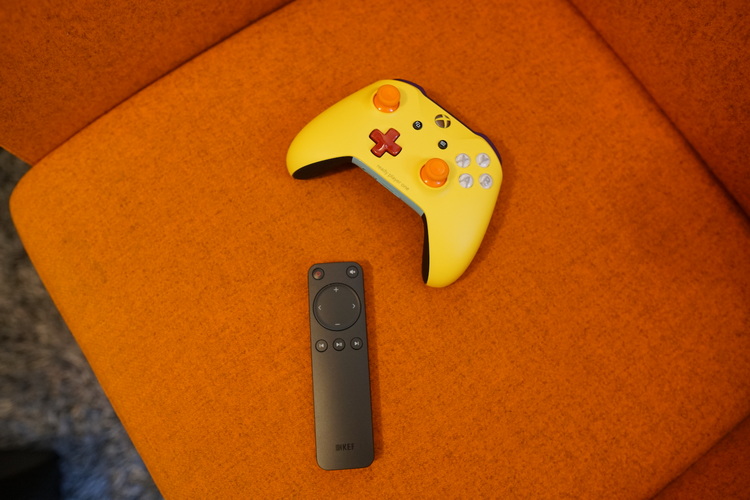
We are now talking about the KEF app, but to adjust the volume and more you can also work with the supplied remote. There is really not much to say about it: it is a small and compact thing that fits well in your hand and seems sturdy enough to survive a hectic family life. It is handy that it also has media controls. Even if you’re streaming, you can quickly reach for the box to pause music or quickly jump to the next track.
As before, there is a glass plate with touch controls on top of the primary speaker. It looks very nice, but to be honest: you probably never use it. You cannot see from the seat.
Uni-Q with MAT
We’ve talked extensively about features now, but is that the essence of a speaker like this one? Yes and no. The LS50 Wireless II is perfectly fine in terms of features, but the higher price compared to mainstream wireless speakers must be justified above all by superior sound quality. KEF has really understood that, we think, by giving the LS50 Wireless II the same improvements as the passive Meta version. A lot has been changed technically.
The housing has been made more solid, with a bass port that makes less noise. Also addressed is the Uni-Q driver which is really something from KEF. When you look at the LS50 Wireless II, you might think it only has one speaker. That is not true. That striking Uni-Q driver is a coaxial speaker, a 2-in-1 driver where a tweeter is suspended decoupled in the middle of a midrange / woofer. The big advantage is that the Uni-Q acts like a point source. Instruments and vocals sound very natural because they seem to come from one point perfectly timed. KEF also places a waveguide on the tweeter – that thing that looks like quarters of an orange – so that higher frequencies are emitted evenly and widely.As a result, you end up with a speaker that makes instruments sound natural and puts them on a large soundstage.
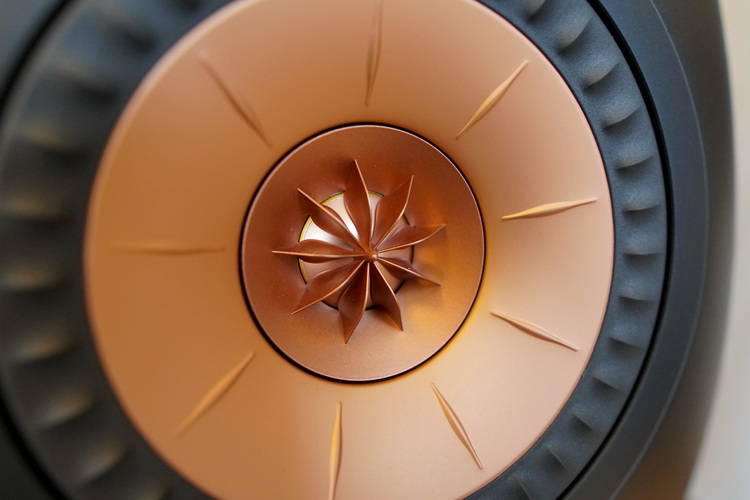
In this version of the 12 thgeneration Uni-Q driver is utilized a metamaterial. This is a general term for a composite material that has properties that you normally do not associate with a solid shape. What KEF does with this in this speaker is to provide better attenuation that is tuned super accurately – so precisely tackles the frequencies where there are acoustic problems. It does this by placing tubes of the metamaterial in a certain pattern (in pictures it looks like you are looking down on a maze) that is calculated to remove all possible unnecessary vibrations and sounds in a speaker. This absorber is located on the back of the Uni-Q driver, inside the cabinet. Very technical, but it is not surprising that it is KEF that comes up with such high-tech.when we visited KEF . In this case, they also involved an expert in metamaterials, Professor Ping Sheng from the University of Hong Kong, and the Chinese company Acoustic Metamaterials Group.

Several other in-depth adjustments have been made, often on a very small scale. For example, KEF has addressed a problem caused by the small space that exists between the tweeter and the cone of the midrange / bass driver. So there are some other issues addressed.
Is this hi-fi?
There are bound to be hi-fi enthusiasts who wonder: “Can an active set like this be ‘real’ hi-fi?”. If you are inclined to ask that question, you may already be someone who is more inclined towards passive speakers and a separate music system, we quietly suspect. Of course there is nothing wrong with that. But is it correct to view speakers like the LS50 Wireless II as a compromise? If we put the thought aside for a moment that everything can always be improved and that you indeed have more opportunities to tweak with a system with separate devices, then we go for a “yes” with these KEFs. The clarity and speed that we hear in North African jazz on ‘Transit’ with Mohammed Abozekry’s dexterous strings on the oud is just top-notch.
We have always found the Uni-Q driver to be strong when it comes to vocals, a plus that has certainly not been watered down in its twelfth generation. Together with the broad and even appearance of the treble, you get very nice pop songs served. The handsome ‘Goose Snow Cone’ by Aimee Mann, for example, with feather-light Christmas bells floating around the room while Mann’s warm, seductive voice is lifelike before us. It is still a bit early for a winter atmosphere, but for once it is allowed. That the LS50 Wireless II also excels in creating an intense, spatial reproduction, we also notice when Daniel Hope’s violin touches the highest notes in his own interpretation of ‘Amazing Grace’. For small speakers it remains surprising how big they sound, even with more symphonic work.

An advantage of active speakers such as this one is that they can optimally control a driver via a DSP, regardless of the volume. It is certainly a plus when watching TV and when listening to electronic music, because those dynamic peaks in the audio are always well processed by the KEFs. Balance and tightness are maintained. In the explosions and the crackling of weapons when the soldiers in the helicopters meet King Kong in ‘Kong Skull Island’ or at Kimbra’s ‘Top of the World’ for example. You will be surprised when you hear what is possible in terms of layer (and you can add a wired sub if you wish). Obviously, if you open everything up, you will encounter limitations – no distortion, but a clear sense that a limit has been reached. You are talking about a lot of decibels. For example, a KEF R7 set with a Hegel H390 will always be able to go even further in terms of dynamics and volume level. But not everyone is looking for that.
Conclusion
KEF is only moving forward with the II version of the LS50 Wireless. The wider support for streaming services and technologies, the better sound quality and the HDMI inputs are positive additions. Compared to say a set of Sonos Five speakers, it is a lot more money, but a pair of LS50 Wireless II speakers also play at a different level. Many rivals have now emerged, including those from other hi-fi brands, so that KEF cannot be the only one to claim to be able to offer ease of use and hi-fi sound. Still, with the LS50 Wireless II, KEF has already managed to rise above ground level with a set of stereo speakers that sound great and have all the functions you could wish for.
PLUS POINTS of KEF LS50 WIRELESS II
- Real hi-fi sound in combination with ease of use
- Greatly improved own app
- All possible streaming options
- HDMI connection
- Modern, living room-friendly design
MINUSES of KEF LS50 WIRELESS II
- App deserves its own tablet version
- You need a long HDMI cable for a wall-mounted TV






